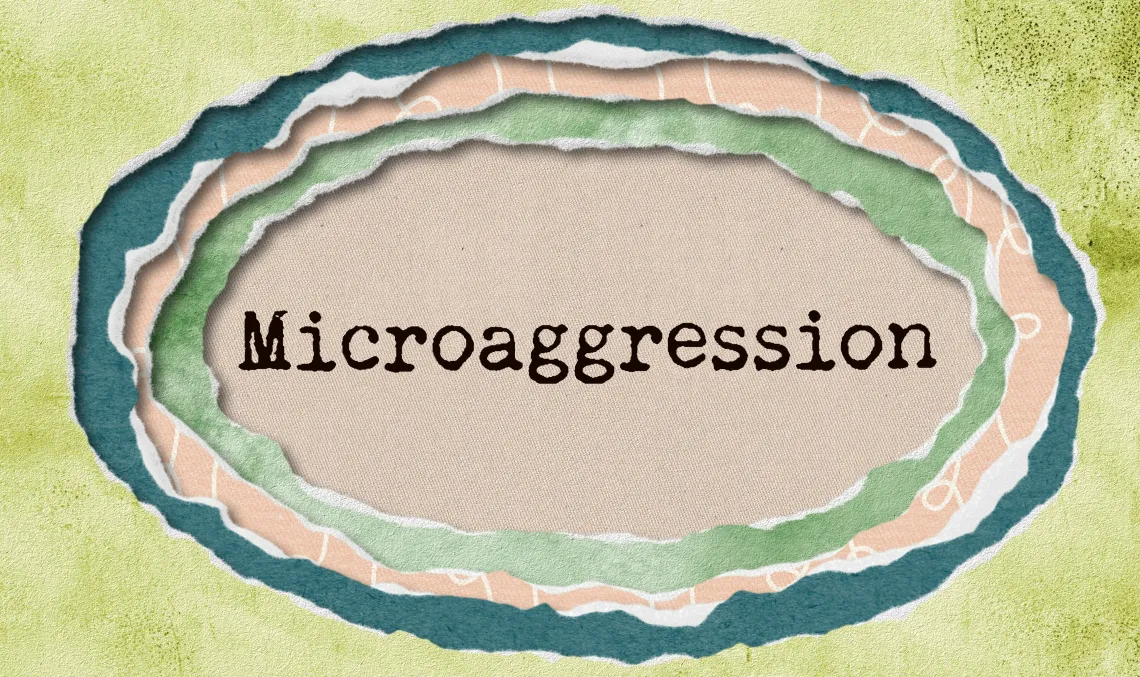What’s in a Name: Defining and Dealing with Microaggressions

By Luke Wink-Moran
Photo Credit: kseniyaomega
Some graduate students experience subtle discrimination that others do not. Some face institutional barriers that don’t apply to their classmates. These experiences and barriers are micro and macro aggressions. Dr. Richard Orozco, who teaches a course called “Microaggression Theory and Racial Battle Fatigue,” defines the terms:
“Microaggressions are everyday verbal, nonverbal, and/or environmental slights or insults that can be delivered either intentionally or unintentionally,” says Dr. Orozco. “They transmit negative messages to people based upon their marginalized group status and imply inferiority or a discounting of peoples’ identities, experiences, or knowledge.” Microaggressions have been characterized as interpersonal, whereas macroaggressions are institutional and systemic.
While these terms give a name to experiences that many graduate students have had, Joshua Hamilton, the Director of African American Student Affairs, says that the terms might not tell the whole story.
“I don’t usually use the terms ‘micro and macro aggressions,’” says Mr. Hamilton, “because I don’t believe that they get at the crux of what people are experiencing or what the people who are perpetuating the harm are actually doing. The terms macro and micro aggression allow the individuals who’ve caused the harm to still have some level of comfort. Like, ‘Oh, you’re not racist, you just had a microaggression.’ When in reality what they did was racist. So, we’re still sheltering the person who has caused the harm. The terms and the way they’re used allow them to argue, ‘Oh that wasn’t me, that was my subconscious mind.’ It isn’t your subconscious mind. It’s a societal structure.”
That societal structure exists systemically, which is where Catherine Tornbom, conflict management expert and professor in the School of Government & Public Policy, thinks any conversation about micro and macro aggressions should begin.
“I believe micro and macro aggressions occur in this broader context of who we are in the U.S.,” says Professor Tornbom. “The whole cultural milieu that we’re in—our organizations, our institutions, our workplaces—to me, is situated within a system that institutionalizes racism. If you look at every practice—medicine; education; politics: every realm—you see, statistically, that minorities receive inferior services. So macro aggressions, from this global perspective, are all the polices that continue to support this incredible unequal distribution of resources. And then when you get into micro aggressions, you’re looking at people’s totally unconscious expression of privilege. And privilege exists on multiple levels: the privilege of education, race, gender identity, ability, etc.”
Mr. Hamilton describes how that expression of privilege might affect students personally and limit their prospects professionally:
At the micro level, “one example I would give is that when black students, or students of color, have cohort mates or professors who are shocked when they do or say something intelligent,” says Mr. Hamilton.
On the macro level, “say a student has an idea for a research topic that relates to the black community,” Mr. Hamilton continues, “but there aren’t any black scholars in their program, or folks who have done that work. That makes their literature review and dissertation defense very difficult. They’re basically trying to justify their existence and their study to people who don’t understand it. For a lot of black graduate students, it’s almost like you’re doing double the work.”
When asked if there were any effective ways that individuals might cope with the impact of micro and macro aggressions—and any conflicts that might arise from them—Mr. Hamilton responded, “Community. I think, for students of color, finding community with folks who share your values, who want to be in your community, who believe you, is extremely important. My advice would be to find a community and connect with a cultural center.”
But whether or not the individuals affected by micro and macro aggressions find a community, the conflict caused by those aggressions still exists. To begin to resolve those conflicts, Professor Tornbom offers this advice:
“Unless I’m seeking an opportunity to understand and expand, I can go through life committing many microaggressions without even knowing that I’m causing harm,” said Professor Tornbom. “So when it comes to conflict resolution itself, the thing you need to think about—first and foremost—is yourself. How are you challenging any and all of your assumptions?”
Microaggressions don’t always occur in one-on-one interactions. They can occur in group settings, like classrooms, team meetings, and group projects. In these cases, it’s important to have preestablished group values that allow participants to talk about the issue.
“Whether you’re an instructor, faculty member, or a graduate student,” said Mr. Hamilton, “consider: are you establishing norms and values that make space for accountability when harm and impact are caused? Because there’s no incentive for someone to be honest about what they’ve experienced if they’re met with punitive punishment.”
When asked what he would do if someone does say they’ve experienced a microaggression because of his actions, Mr. Hamilton explained how he would handle the situation.
“Thing first I would do is apologize, if they’re willing to listen to me. And I have to understand that this is about them, and not me. What I mean by that is they don’t need to accept my apology. Then I have to ask myself, ‘What am I going to do to mitigate, or no longer cause, that harm? What am I going to do to transform how I engage with people, so that the way I engage is no longer harmful? So I don’t do it to anyone else?’ That’s the kind of world we want to create, right? A world in which, if harm is caused, people take steps to correct it.”
Those interested in learning more about bias and conflict resolution can find resources using the links below.
Harvard Project Implicit: https://implicit.harvard.edu/implicit/takeatest.html.
The Center for Nonviolent Communications:
Feelings Inventory: https://www.cnvc.org/training/resource/feelings-inventory
Needs Inventory: https://www.cnvc.org/training/resource/needs-inventory

